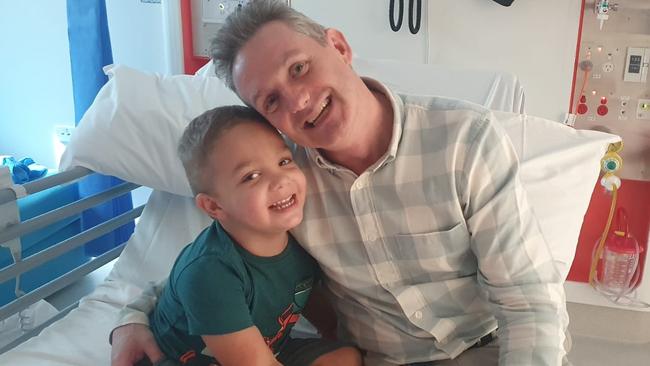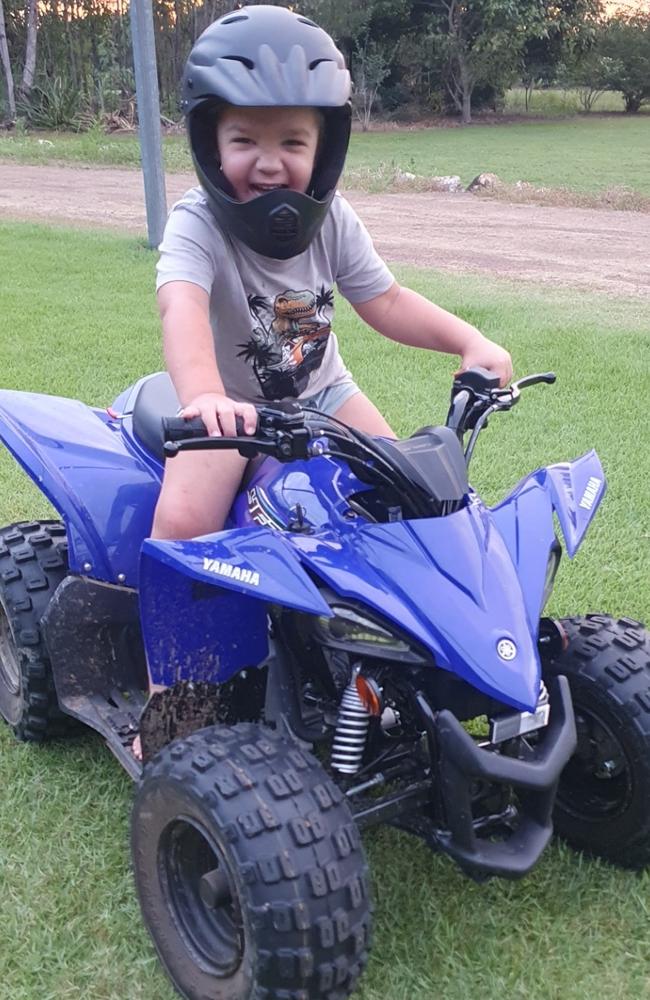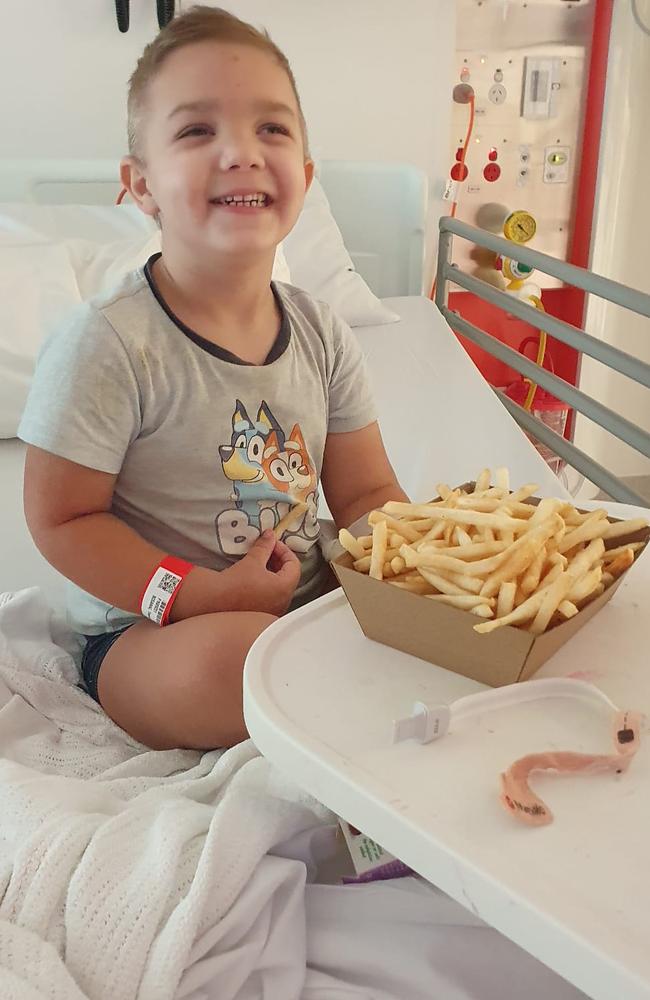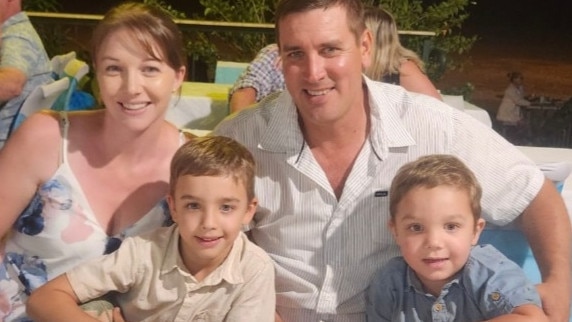Thomas Bosanac: Inside bubbly Berry Springs boy’s battle with neurofibromatosis
If you were to pass this four-year-old at your local park, you wouldn’t see anything other than a bubbly, beaming preschooler – but look closely and you may see the hints that all is not right.

Northern Territory
Don't miss out on the headlines from Northern Territory. Followed categories will be added to My News.
If you were to pass Berry Springs boy Thomas Bosanac at your local park, you wouldn’t see anything other than a bubbly, beaming preschooler.
“He’s very crazy, a typical, wild four-year-old,” mum Amanda said.
“He just got a quad bike for his birthday, so he’s been cruising around the farm.
“But he has a lot going on underneath.”
Look a bit closer and you might see the hints that all is not well in his little body.
There is the lazy right eye that turns out occasionally. The cafe-au-lait birthmarks dotting his skin. If his hair is cut short, you may see the “gnarly” scars unrolling across his head like train tracks.
Thomas lives with neurofibromatosis, an incurable condition that causes tumours to grow on nerves, under the skin and deep within the body, leading to heightened risk of blindness, hearing loss, scoliosis, learning difficulties, bone abnormalities and chronic pain.
For Thomas, it is his sight at the most immediate risk – if an experimental drug Thomas has begun taking, Trametinib, fails to block the path of the tumours, thereby preventing further growth, he is likely to lose the use of his eyes.

Mrs Bosanac said surgical intervention was not possible, as the tumour is growing at the base of Thomas’ optic nerves, right near his brain, a location too sensitive to invade.
“Preserving his eyesight” is now the main game, Mrs Bosanac said.
At least now knowing his condition allows the Bosanacs to do all in their power to give their son as normal a life as possible.
Mrs Bosanac said she and husband Mathew had terrible struggles finding clinicians in Darwin who could diagnose their son – despite NF being one of the most common genetic conditions in Australia, affecting about 13,000 people.
“He was a very unsettled and unhappy baby,” Mrs Bosanac said.

“I felt like there was something not right but it took a long time to pinpoint.
“We saw a lot of doctors, went through a lot of different possibilities.
“It was actually a chiropractor who first mentioned his birthmarks” – a telltale sign of NF.
After reading up on the condition, Mrs Bosanac joined a Facebook group, and managed to get a coffee with a Darwin-based mother of a child with NF.
That woman referred the Bosanacs to a Palmerston-based GP, Dr Chris Harnden, who had experience of the condition.
A subsequent MRI finally confirmed the source of Thomas’ ailments – and so began a whole new treadmill of medical appointments, many of them interstate.
“It’s so unpredictable,” Mrs Bosanac said.

“There’s lots of instances where you go for a scan and end up in surgery the next day.
“It’s never easy.”
According to the Children’s Tumour Foundation, the experience of the Bosanacs in finding a lack of medical knowledge about NF is not uncommon.
“More common than many other well-known genetic conditions, neurofibromatosis remains under-recognised and underfunded,” foundation chief executive Leanne Dib said.
“This needs to change.”
In recognition of the upcoming Neurofibromatosis Awareness Month, the foundation is relaunching its virtual fundraising challenge Steps Towards a Cure.
Running throughout May, participants have the option to walk or run 150km in support of those impacted by NF – a kilometre for each of the 150 children born with the condition each year in Australia.
Registration for Steps Towards a Cure is available online.





